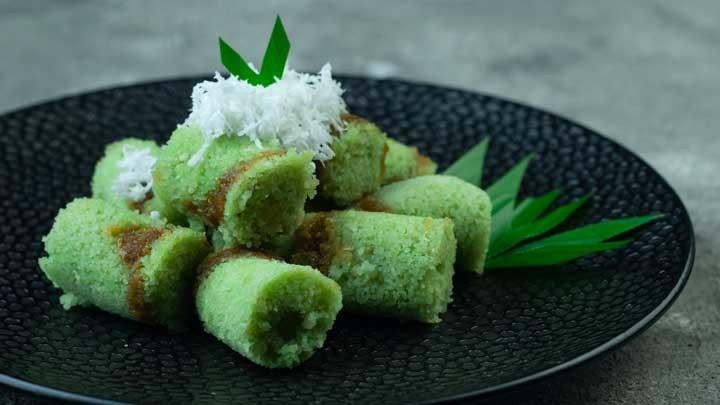When I first encountered Lithuanian Cepelinai, it was love at first bite. Imagine thick, pillowy dumplings made from mashed potatoes, stuffed with flavorful minced meat, and served with a creamy, savory sauce. It’s a dish that perfectly blends heartiness and warmth—ideal for cold winter days or any time you want to enjoy a truly satisfying meal.
As I sat down to my first plate of Cepelinai in a cozy Lithuanian restaurant, I was struck by how much this dish reflected the country’s culinary tradition. With humble, wholesome ingredients like potatoes and ground meat, Cepelinai is a dish that speaks to the heart of Lithuanian home cooking. In fact, it’s often considered the national dish of Lithuania, enjoyed during family gatherings, celebrations, and festivals.
In this article, I’ll guide you through the origins of Cepelinai, how to prepare them, and the many variations of this beloved dish. Whether you’ve tried them before or are new to Lithuanian cuisine, you’re in for a delicious treat!
What is Cepelinai?
The Basics of Lithuania’s Favorite Dumplings

Cepelinai (pronounced “zeh-peh-LEE-nai”) are large, oval-shaped dumplings made primarily of potatoes. The outer layer consists of grated potatoes mixed with a small amount of flour, which forms a dough-like consistency. The dumplings are then stuffed with a filling, most commonly made of ground meat (typically pork or beef), but variations can include mushrooms, cheese, or even curd.
These dumplings are usually boiled until they’re tender and then served with a rich sauce, often made from sour cream, bacon, and onions. The texture of Cepelinai is what sets them apart from other potato-based dishes. The dumplings are dense yet soft, with a delicate exterior that gives way to a savory meat filling.
Though the dish may seem simple, it’s deeply rooted in Lithuania’s culinary history. It’s said that Cepelinai got their name from their shape, which resembles zeppelins, the airships from the early 20th century, due to their elongated form.
The History of Cepelinai: A Staple of Lithuanian Cuisine
The Origins and Cultural Significance of Cepelinai
Cepelinai has been a staple in Lithuanian homes for generations. This hearty dish originated as a way to make use of potatoes, which were abundant in Lithuania. Potatoes depobos were introduced to the country in the 18th century, and over time, they became an integral part of Lithuanian cuisine, especially in rural areas where farming was central to daily life.
Historically, Cepelinai were often served on special occasions like weddings, holidays, and family celebrations. The dish is filling, and its rich flavors were meant to provide energy for the hardworking people of Lithuania. In rural families, preparing Cepelinai was often a communal activity, where multiple generations would gather to help prepare and enjoy the dish together.
Today, Cepelinai continues to hold a special place in Lithuanian culture. It’s often seen as a symbol of Lithuanian hospitality, and it’s common for families to serve this dish to guests, whether during a celebration or as a comforting meal to share with loved ones.
How to Make Traditional Cepelinai
A Step-by-Step Guide to Preparing Potato Dumplings Stuffed with Meat
Making Cepelinai at home requires a bit of time and effort, but the result is definitely worth it. Here’s a traditional recipe for preparing these delicious Lithuanian potato dumplings:
Ingredients:
- For the dumplings:
- 4 large potatoes (preferably starchy potatoes)
- 1/2 cup flour (or more as needed)
- Salt (to taste)
- For the filling:
- 1 lb ground pork (or a mix of pork and beef)
- 1 small onion, finely chopped
- Salt and pepper (to taste)
- For the sauce:
- 1/2 cup sour cream
- 1/4 cup bacon lardons (or finely chopped bacon)
- 1 small onion, finely chopped
Method:
- Prepare the Potatoes: Begin by peeling and grating the potatoes. Once grated, place the potatoes in a clean towel or cheesecloth, and wring out as much excess moisture as possible. You want the potatoes to be as dry as possible to avoid a watery mixture.
- Make the Dumpling Dough: Combine the grated potatoes with flour and a pinch of salt. Mix until the dough is smooth and cohesive. If the dough is too wet, add a little more flour. You want it to be firm but pliable.
- Prepare the Filling: In a frying pan, sauté the chopped onions in a little oil until soft and translucent. Add the ground pork (or pork and beef mixture), and cook until browned. Season with salt and pepper to taste. Set aside and let the mixture cool.
- Form the Dumplings: Take a handful of the dough and flatten it into a disc in the palm of your hand. Add a spoonful of the meat filling in the center, then carefully mold the dough around the filling to form a large, oval-shaped dumpling. Repeat this process until all the dumplings are formed.
- Boil the Cepelinai: large amount of salt water. Gently drop the dumplings into the boiling water, a few at a time, to avoid overcrowding. Boil for about 20-30 minutes or until the dumplings float to the surface and are fully cooked.
- Make the Sauce: While the dumplings are boiling, cook the bacon in a skillet until crispy. Remove the bacon and sauté the onions in the bacon fat until softened. Add sour cream to the skillet, stirring to create a creamy sauce. Season with salt and pepper to taste.
- Serve: Once the Cepelinai are done, serve them with the creamy bacon and sour cream sauce on top. You can garnish with additional crispy bacon bits and fresh herbs if desired.
Variations of Cepelinai: Customizing the Classic
Regional Twists and Creative Variations
While the traditional meat-filled Cepelinai is the most common, there are plenty of regional variations that make this dish even more exciting. Here are a few ways you can customize your Cepelinai:
- Cheese and Mushroom Filling: In some parts of Lithuania, Cepelinai are made with a filling of curd cheese and mushrooms instead of meat. This vegetarian variation offers a lighter yet still satisfying option.
- Vegetable Fillings: Some variations use potatoes mixed with herbs or spinach for the filling, offering a different flavor profile. These can be paired with a savory sauce or even a tomato-based sauce for a unique twist.
- Sweet Cepelinai: For a dessert version, some people fill their Cepelinai with sweetened fruit or berries and serve them with a sugar syrup or sour cream. This version is less common but still a fun way to enjoy the traditional shape and texture of Cepelinai.
Cepelinai Around the World
Lithuania’s Signature Dish Finds a Global Following
Though Cepelinai originates in Lithuania, the dish has gained popularity worldwide, especially in countries with large Lithuanian communities, such as the United States, Canada, and Poland. You’ll find Cepelinai served in Lithuanian restaurants in major cities around the world, with each restaurant adding its own unique spin to the classic recipe.
In fact, Cepelinai is becoming more widely known outside of Lithuania, and its hearty, comforting nature makes it an appealing dish for people from various cultural backgrounds.
Conclusion: A Taste of Lithuania in Every Bite
Cepelinai is more than just a dish; it’s a part of Lithuanian culture, history, and tradition. Whether you enjoy it as part of a festive celebration or as a comforting meal to share with friends and family, Cepelinai offers a delicious, hearty, and satisfying experience. By making this dish, you not only get to taste Lithuania’s culinary heritage but also experience the warmth and hospitality that comes with every plate of this beloved dish.
If you’ve never tried Cepelinai before, I highly recommend giving it a go. With its rich flavor and satisfying texture, it’s sure to become a favorite comfort food in your kitchen!




















